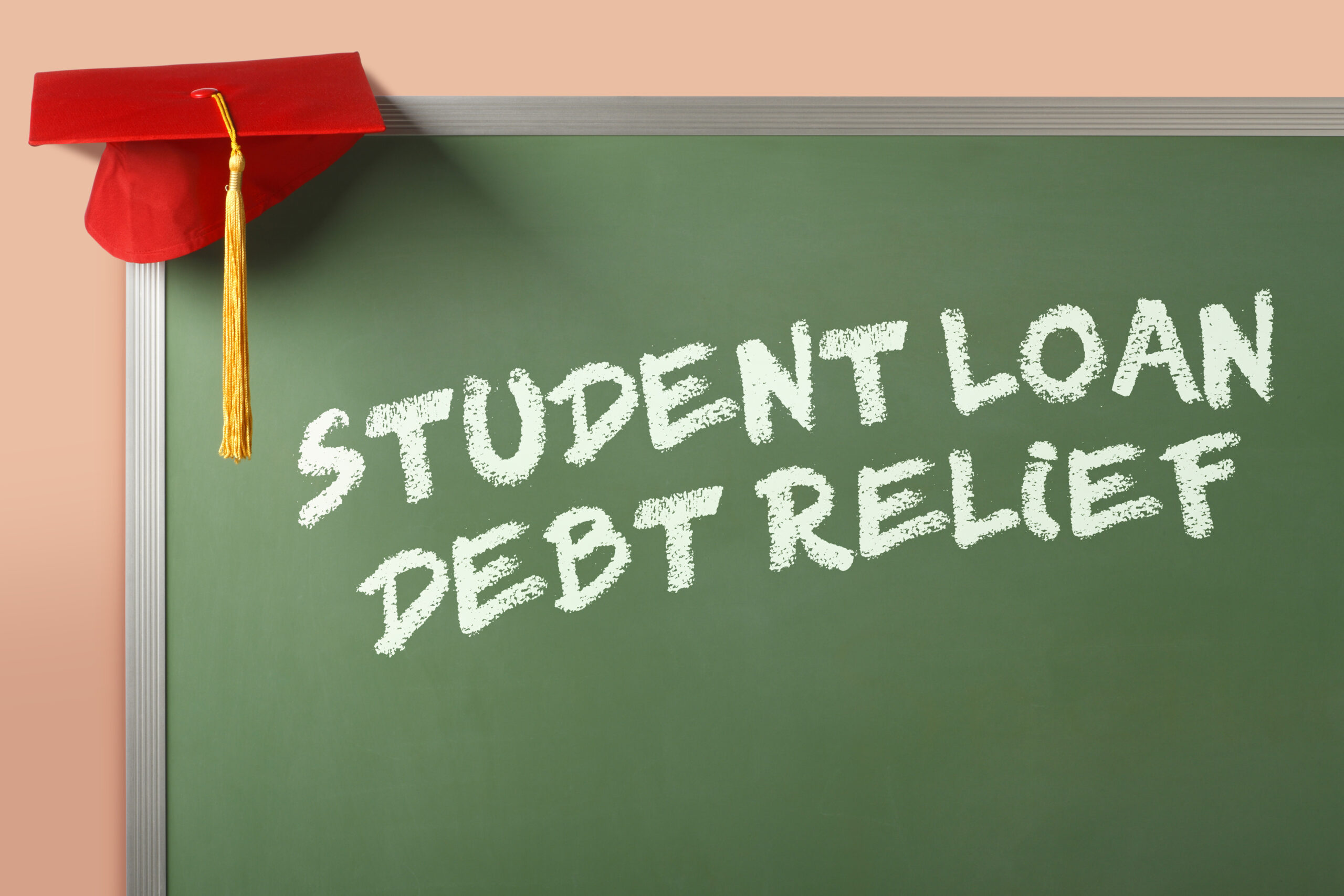The burden of student loan debt has become a pressing issue, affecting millions of Americans. The relief of student loan debt has emerged as a potential solution, sparking debates and discussions on its economic, individual, and societal implications.
This article delves into the complexities of student loan debt relief, exploring its potential impact on the economy, individuals, and the future of higher education. We examine funding sources, implementation methods, and alternative solutions, providing a comprehensive understanding of this multifaceted topic.
Economic Impact
Student loan debt relief has the potential to have a significant impact on the economy as a whole. By reducing the burden of debt on borrowers, it could free up money that can be spent on other goods and services, leading to increased economic growth.
Additionally, it could help to reduce inflation by lowering the cost of education and making it more affordable for students to pursue higher education.
Impact on Economic Growth
One of the potential benefits of student loan debt relief is that it could lead to increased economic growth. By freeing up money that borrowers would otherwise have to use to repay their loans, they will have more money available to spend on other goods and services.
This could lead to increased consumer spending, which is a major driver of economic growth.
Impact on Inflation
Student loan debt relief could also help to reduce inflation. The cost of education has been rising steadily for decades, and this has contributed to the overall increase in inflation. By making it more affordable for students to pursue higher education, student loan debt relief could help to lower the cost of education and reduce inflation.
Impact on Specific Sectors, Relief of student loan debt
Student loan debt relief could also have a significant impact on specific sectors of the economy. For example, it could lead to an increase in the demand for housing, as borrowers are able to afford to buy homes sooner. Additionally, it could lead to an increase in the number of students pursuing higher education, as they are no longer burdened by the high cost of tuition.
Impact on Individuals
Student loan debt affects a diverse range of individuals, with varying demographics and financial situations. Relief would have significant implications for different groups.
Demographics of Borrowers
According to the Federal Reserve, over 43 million Americans have federal student loan debt, totaling over $1.7 trillion. The majority of borrowers are between the ages of 25 and 44, with women holding a slightly higher proportion of the debt.
Minority groups, particularly Black and Hispanic borrowers, face higher levels of student loan debt compared to white borrowers.
Potential Benefits
Relief could provide substantial financial benefits for individuals. Reducing or eliminating student loan debt would free up monthly cash flow, allowing borrowers to save, invest, or pay down other debts. This could improve their overall financial well-being and long-term financial security.Furthermore,
relief could expand career choices. With less financial burden, individuals may be more likely to pursue graduate education, start businesses, or take risks in their careers. Homeownership rates could also increase as individuals can save for down payments or qualify for mortgages with lower debt-to-income ratios.
Potential Drawbacks
While relief has many potential benefits, it also raises concerns. Some argue that it could be unfair to taxpayers who have already paid off their student loans or those who chose not to attend college. Additionally, it could potentially lead to inflation if the government funds relief through deficit spending.
Impact on Mental Health and Quality of Life
Student loan debt can have a significant impact on mental health and overall quality of life. The stress of managing debt can lead to anxiety, depression, and other mental health issues. Relief could alleviate this stress, improving individuals’ mental well-being and overall happiness.
Funding and Implementation
Addressing the issue of student loan debt relief requires careful consideration of potential funding sources and implementation methods. Identifying viable funding options and implementing an efficient and effective relief program pose significant challenges that need to be thoroughly examined.
Funding Sources
- Federal Budget:Reallocating funds from other government programs or increasing the federal deficit could provide a potential source of funding. However, this approach may face political and economic constraints.
- Taxation:Imposing new taxes or increasing existing ones could generate revenue for student loan relief. However, this option could be unpopular and have negative economic consequences.
- Wealth Tax:A tax on high-net-worth individuals or corporations could be explored as a funding source. However, designing and implementing such a tax could be complex and face legal challenges.
- Student Loan Repayment Fund:Establishing a dedicated fund specifically for student loan repayment could be considered. This fund could be financed through contributions from the government, employers, and individuals.
Political and Social Implications

The political landscape surrounding student loan debt relief is complex, with various stakeholders holding different perspectives. The Biden administration has proposed a plan to cancel up to $20,000 in federal student loan debt for borrowers earning less than $125,000 annually, or $250,000 for married couples filing jointly.
This proposal has faced opposition from Republicans and some Democrats, who argue that it is too costly and unfair to taxpayers who have already paid off their student loans.
Impact on Elections and Higher Education Policy
The student loan debt relief debate is likely to have a significant impact on the upcoming midterm elections. Democrats hope that the proposal will energize their base and help them maintain control of Congress. Republicans, on the other hand, are likely to use the issue to attack Democrats as being fiscally irresponsible.
The debate over student loan debt relief is also likely to shape the future of higher education policy. If the Biden administration’s plan is implemented, it could lead to a decrease in the cost of college and make it easier for students to repay their loans.
However, if the plan is blocked or scaled back, it could lead to a continued increase in the cost of college and make it even more difficult for students to repay their loans.
Social and Ethical Implications
The provision of student loan debt relief raises a number of social and ethical issues. Some argue that it is unfair to forgive the debts of those who have borrowed money to pay for college, while others argue that it is necessary to help those who are struggling to repay their loans.
There are also concerns that student loan debt relief could lead to a decrease in the quality of higher education. If colleges and universities know that the government will forgive student loans, they may be less likely to control costs or improve the quality of their programs.
Alternative Solutions
While providing full relief for student loan debt remains a controversial topic, several alternative solutions have been proposed to address the issue without completely eliminating debt obligations.
These alternatives aim to make student loans more manageable and accessible while still ensuring that borrowers repay a portion of their debt.
Income-Driven Repayment Plans
Income-driven repayment (IDR) plans are designed to adjust monthly loan payments based on a borrower’s income and family size. These plans extend the repayment period, typically to 20 or 25 years, and cap monthly payments at a percentage of the borrower’s discretionary income.
IDR plans offer flexibility and affordability, allowing borrowers to avoid default and access loan forgiveness after a certain number of years in repayment.
Tuition-Free College
Tuition-free college proposals aim to eliminate or significantly reduce the cost of attending college, making higher education more accessible and affordable for all students.
This approach would address the root cause of student loan debt by reducing the need for borrowing. However, it raises concerns about the potential impact on college quality and the cost to taxpayers.
Debt Consolidation
Debt consolidation involves combining multiple student loans into a single loan with a lower interest rate. This can simplify repayment and potentially reduce monthly payments.
While debt consolidation can provide short-term relief, it does not eliminate the underlying debt and may extend the repayment period, resulting in higher total interest paid over time.
International Comparisons: Relief Of Student Loan Debt
:quality(70)/cloudfront-us-east-1.images.arcpublishing.com/cmg/L4LI4EI6CZGOFIL47BQVBCQJWA.jpg)
Countries worldwide have adopted varying approaches to student loan debt relief, offering valuable insights for policymakers in the United States.
In the United Kingdom, the government introduced income-contingent loans in 1998, where repayments are tied to earnings. After 25 years, any remaining debt is forgiven. This system has been praised for its flexibility but criticized for potentially prolonging repayment periods.
Australia’s Income-Contingent Loans
- Similar to the UK, Australia has income-contingent loans with a 15-year repayment period.
- Repayments are made through the tax system, ensuring affordability.
- This system has successfully reduced the number of Australians defaulting on student loans.
New Zealand’s Partial Debt Forgiveness
- New Zealand offers partial debt forgiveness after 10 years of repayments.
- The amount forgiven varies depending on income and occupation.
- This approach provides a compromise between full debt relief and traditional repayment schedules.
Best Practices and Lessons Learned
- Income-contingent loans provide flexibility and affordability for borrowers.
- Partial debt forgiveness can offer a balance between relief and responsibility.
- Clear communication and education are crucial to ensure borrowers understand their repayment obligations.
Closing Summary

The relief of student loan debt remains a contentious issue, with no easy answers. As the debate continues, it is crucial to consider the diverse perspectives and potential consequences of any proposed solutions. By fostering informed discussions and exploring innovative approaches, we can work towards addressing the challenges posed by student loan debt and ensuring a more equitable and accessible higher education system.
Clarifying Questions
What is the potential economic impact of student loan debt relief?
Student loan debt relief could have a significant impact on the economy, potentially boosting economic growth, reducing inflation, and increasing consumer spending. It could also positively affect specific sectors, such as the housing market and higher education.
How would student loan debt relief impact individuals?
Relief could provide substantial benefits for individuals, including improved financial well-being, increased career opportunities, and greater access to homeownership. It could also have a positive impact on mental health and overall quality of life.
What are the potential funding sources for student loan debt relief?
Potential funding sources include federal appropriations, refinancing, and income-based repayment plans. Each option has its own advantages and disadvantages, and the feasibility of each will need to be carefully considered.
